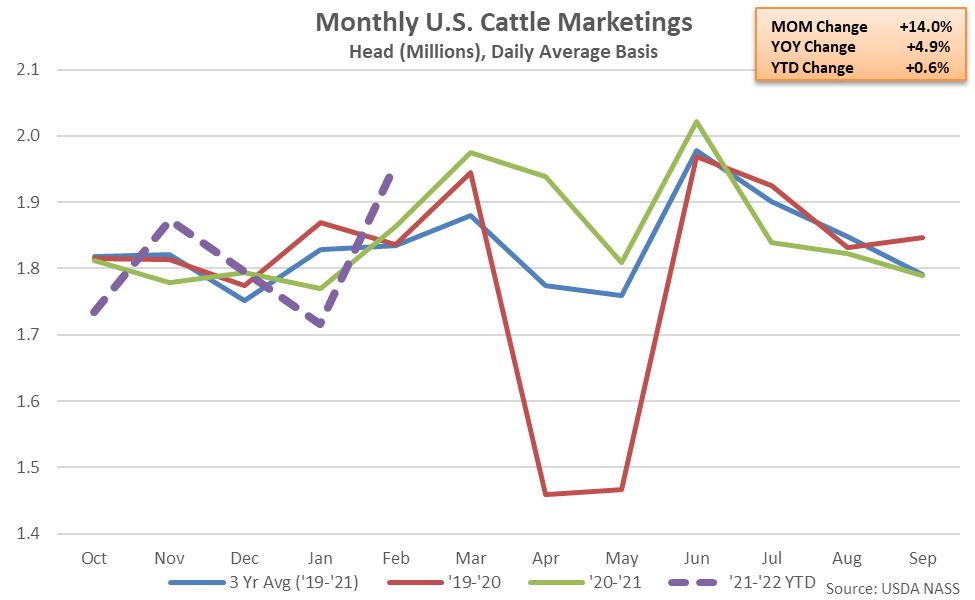U.S. Cattle on Feed Update – Mar ’22
Executive Summary
U.S. cattle on feed figures provided by the USDA were recently updated with values spanning through the end of Feb ’22. Highlights from the updated report include:
- U.S. cattle and calves on feed for the slaughter market as of Mar 1st finished 1.4% above previous year figures, remaining at a record high seasonal level for the second consecutive month. The YOY increase in the cattle on feed supply was largely consistent with average analyst expectations.
- Placements in feedlots increased 9.3% on a YOY basis throughout Feb ’22, finishing above previous year levels for the fourth time in the past five months. The YOY increase in placements was larger than average analyst expectations.
- Marketings of fed cattle increased 4.9% on a YOY basis throughout Feb ’22, reaching a 22 year high seasonal level. The YOY increase in marketings was larger than average analyst expectations.
Additional Report Details
According to the USDA, Mar 1st cattle and calves on feed for the slaughter market in the U.S. for feedlots with capacity of a thousand head or more declined seasonally from the record high level experienced throughout the previous month but remained 1.4% above previous year levels. The cattle on feed supply remained at a record high seasonal level for the second consecutive month. The YOY increase in the cattle on feed supply was the third experienced in a row and the largest experienced throughout the past ten months. The 1.4% YOY increase in the cattle on feed supply was largely consistent with average analyst expectations of a 1.6% YOY increase.
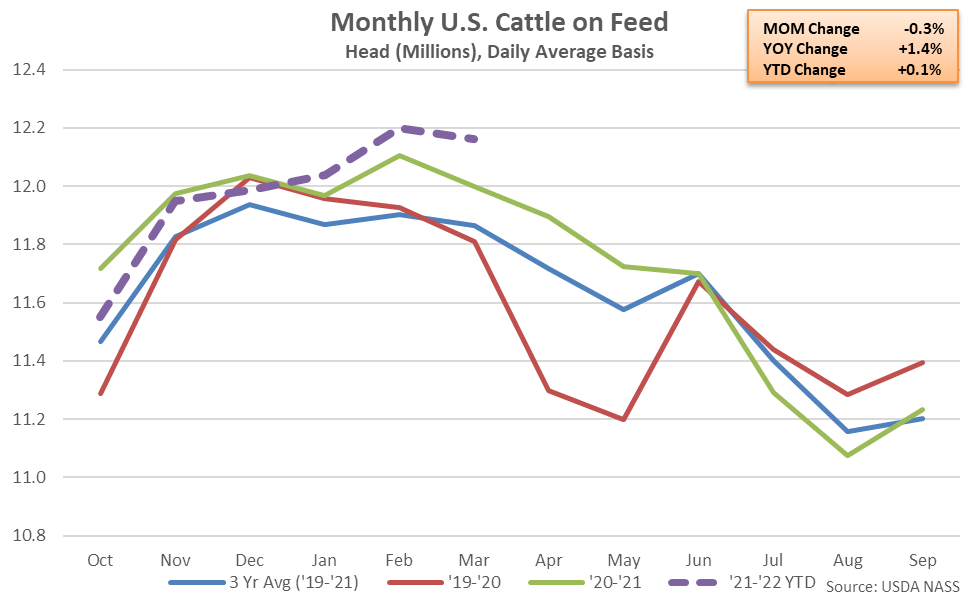
Feb ’22 placements in feedlots increased contraseasonally to a four month high level while finishing 9.3% above previous year levels, reaching a three year high seasonal level. The YOY increase in placements was the fourth experienced throughout the past five months and the largest experienced throughout the past ten months. The 9.3% YOY increase in placements was larger than average analyst expectations of a 6.5% increase. YOY increases in placements were widespread across weight groupings and led by those weighing 800 pounds or more (+10.4%), followed by placements weighing 600-699 pounds (+10.2%), 700-799 pounds (+8.6%) and 600 pounds or less (+7.5%).
’20-’21 annual placements in feedlots rebounded 0.2% from the four year low level experienced throughout the previous production season. ’21-’22 YTD placements have increased by an additional 3.9% on a YOY basis throughout the first five months of the production season and are on pace to reach a four year high level.
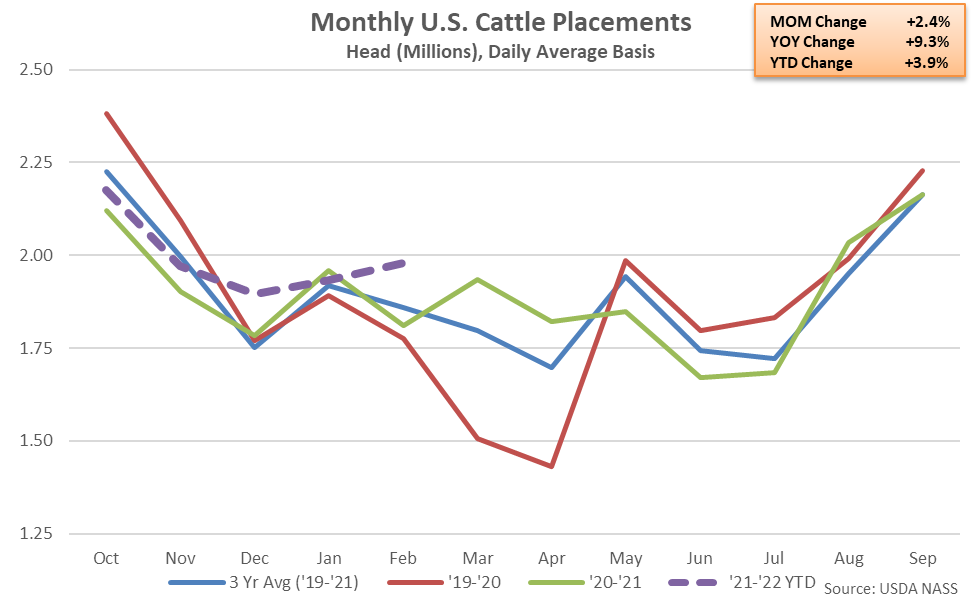
Cattle placements weighing under 700 pounds increased 8.7% on a YOY basis throughout Feb ’22, reaching a three year high seasonal level. The YOY increase in cattle placements weighing under 700 pounds was the fifth experienced in a row.
Cattle placements weighing under 700 pounds declined by 2.6% on a YOY basis throughout the ’20-’21 production season, reaching a four year low level. ’21-’22 YTD placements weighing under 700 pounds have rebounded by 5.4% on a YOY basis throughout the first five months of the production season, however.
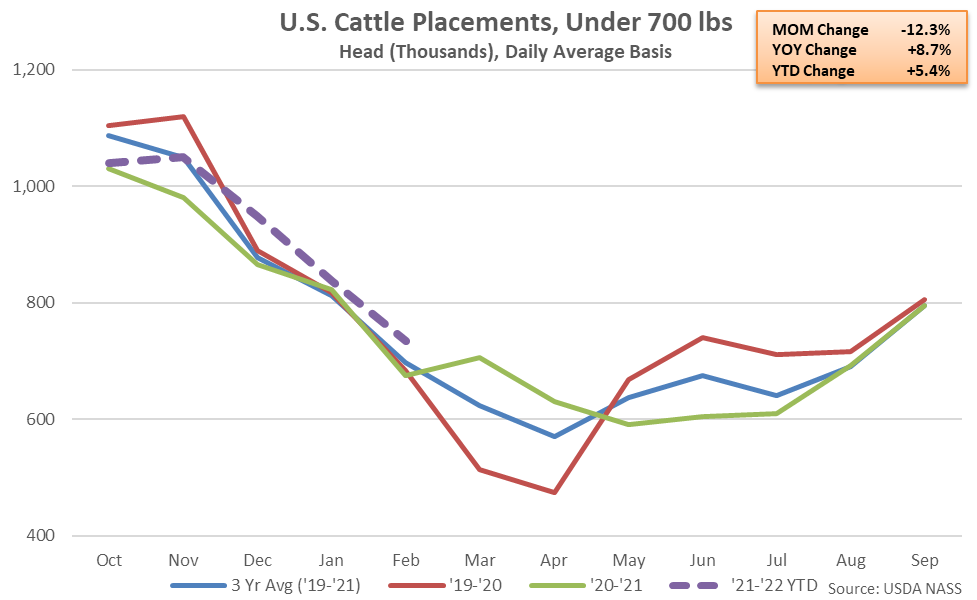
Cattle placements weighing 700 pounds or more increased 9.6% on a YOY basis throughout Feb ’22, also reaching a three year high seasonal level. The YOY increase in cattle placements weighing 700 pounds or more was the largest experienced throughout the past ten months.
Cattle placements weighing 700 pounds or more increased 2.2% on a YOY basis throughout the ’20-’21 production season, reaching a four year high level. ’21-’22 YTD placements weighing 700 pounds or more have increased by an additional 2.7% on a YOY basis throughout the first five months of the production season.
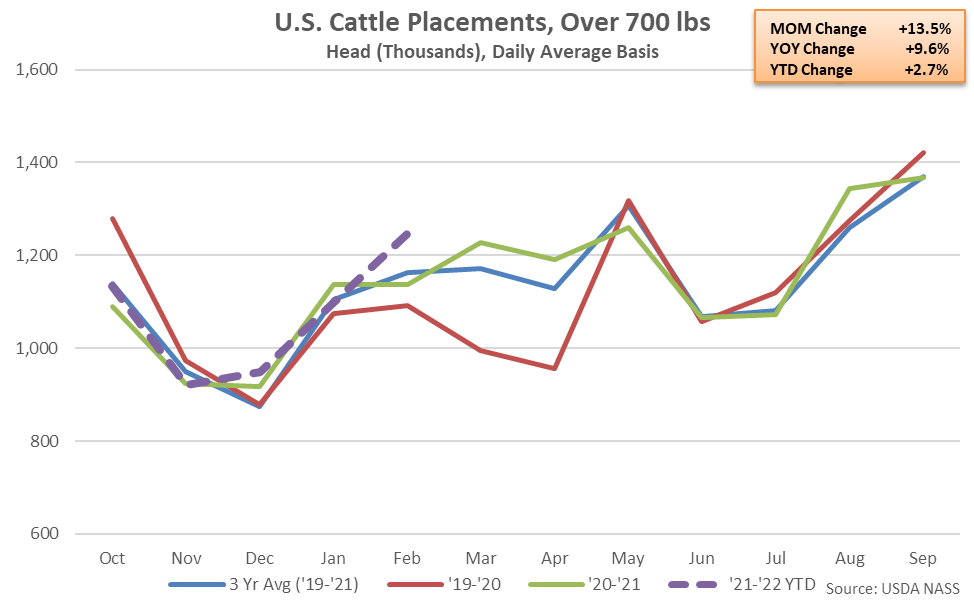
Marketings of fed cattle increased 4.9% on a YOY basis throughout Feb ’22, reaching a 22 year high seasonal level. The YOY increase in marketings was the third experienced throughout the past four months. The 4.9% YOY increase in marketings was larger than average analyst expectations of a 3.4% increase.
’20-’21 annual marketings of fed cattle increased 3.1% on a YOY basis, reaching a 13 year high level. ’21-’22 YTD marketings have increased by an additional 0.6% on a YOY basis throughout the first five months of the production season.
